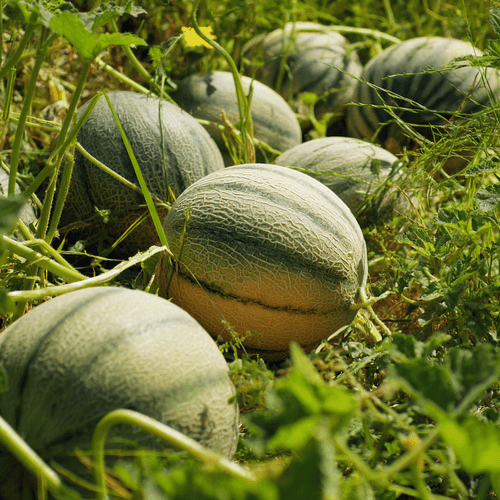Did you know ?
- 1 Melons are botanically related to cucumbers, pumpkins, and squashes.
- 2 The world’s heaviest melon weighed over 159 kg (350 lbs).
- 3 Melons are 90% water, making them excellent for hydration.

The melon is a sweet, juicy, and refreshing fruit, popular worldwide for its vibrant flavor and hydrating flesh. Melons come in many varieties, each with unique taste, color, and texture. They are enjoyed fresh, in salads, desserts, and beverages.
Did you know ?
View other Pome fruits
Nutrition
| Calories | 54 kcal |
| Proteins | 1.3g |
| Carbohydrates | 13g |
| of which sugars | 12g |
| Fiber | 1.4g |
| Fats | 0.3g |
Ripeness
Selection
Storage and ripening
If you bought an unripe melon, here's how to speed up the process :
Health
Origin
Melons have ancient origins, believed to be first domesticated in Africa and Southwest Asia. They spread through the Mediterranean, Asia, and eventually worldwide. Today, melons are cultivated in warm climates across the globe and are a staple summer fruit.
Recipes
Gallery
There is no images yet. Submit one now to contribute to the gallery !
F.A.Q
Warnings
Watermelon has a smooth green rind and red or yellow flesh, while most melons have netted or smooth skin and orange, green, or white flesh.
Pumpkin is a related cucurbit but is used as a vegetable and is not sweet like melon.
Papaya looks similar when cut but has a different flavor, texture, and black seeds.